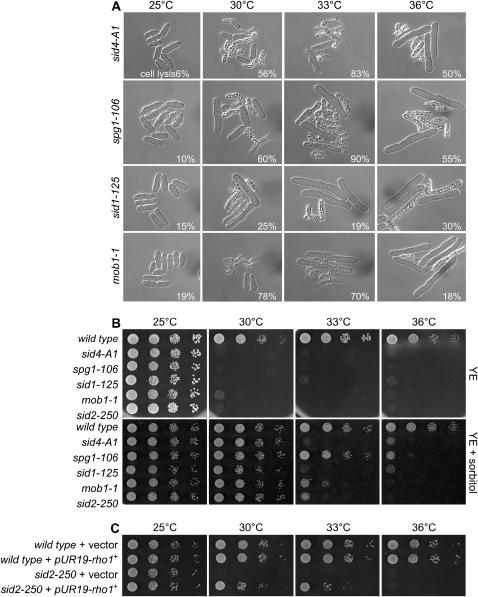Figure 3.
The growth defect and lysis phenotype of SIN mutants can be rescued by osmotic stabilizer and overexpression of rho1+ can rescue sid2-250. (A) Other SIN mutants also show a lysis phenotype similar to that of sid2-250 at low restrictive temperatures. Selected SIN mutants [sid4-A1 (YDM116), spg1-106 (YDM430), sid1-125 (YDM445), and mob1-1 (YDM670)] were first grown in liquid rich medium at 25° to log phase and then shifted to 30,° 33°, and 36° for 4 hr before images were collected using DIC microscopy. The percentages of lysed cells in each culture are shown. (B) Wild-type (YDM105), sid2-250 (YDM429), and other selected SIN mutants (the same as in A) were grown in YE at 25° and then diluted and dropped on plates of YE or YE plus 1.2 m sorbitol. Plates were incubated at different temperatures as indicated for 3–5 days before photography. (C) Wild-type (YDM105) and sid2-250 (YDM429) cells transformed with either empty vector (pUR19) or pUR19-rho1+ were first grown in EMM and then diluted and dropped onto plates of YE.

